A SurveyUSA poll taken one week ago showed just 1% of Americans would take home no paycheck.
Of note, in California alone, Governor Gavin Newsom said on Thursday that unemployment insurance filings had spiked by 80,000 on Tuesday alone, vs. the usual rate of around 2,000 per day.
Meanwhile in Ohio, jobless claims have spiked to nearly 140,000 vs. last week.
Of those laid off, per SurveyUSA, high school educated workers are twice as likely to have lost their jobs as college graduates, while women and older workers are almost twice as likely to have been laid off than men and younger workers.
Methodology: SurveyUSA interviewed 1,000 USA adults nationwide 03/18/20 through 03/19/20. Of the adults, approximately 60% were, before the virus, employed full-time or part-time outside of the home and were asked the layoff and reduced-hours questions. Approximately half of the interviews for this survey were completed before the Big 3 Detroit automakers announced they were shutting down their Michigan assembly lines. For most Americans, events continue to unfold faster than a human mind is able to process the consequences.Early markers on the road from recession to depression as the Coronavirus threatens to stop the world from spinning on its axis show that 1 in 4 working Americans have had their hours reduced as a result of COVID-19, according to SurveyUSA's latest time-series tracking poll conducted 03/18/20 and 03/19/20.
Approximately 160 million Americans were employed in the robust Trump economy 2 months ago. If 26% have had their hours reduced, that translates to 41 million Americans who this week will take home less money than last, twice as many as SurveyUSA found in an identical poll 1 week ago. -Survey USA
And Goldman Sachs' research appears to confirm this ugliness, as they compile anecdotes from recent press reports and company announcements to estimate the magnitudes of the increase in layoffs and decline in consumer spending due to the virus.
March data available thus far show a sharp contraction in US activity, with very weak manufacturing surveys, a 33% increase in initial claims over the last week, and large declines in our monthly activity nowcast and the high-frequency indicators we are tracking to gauge the impact of the coronavirus.
Many US states have reported unprecedented surges in jobless claims this week and Goldman estimates based on these news reports suggest that nationwide jobless claims will rise to roughly 2¼ million (seasonally adjusted) in the next claims report covering the week of March 15-21, a roughly nine-fold increase over the pre-virus level.
Here are the key data points available so far by industry below.
Hotels.
Hotels are expecting to run at much lower occupancy rates than usual.
- According to the President of the American Hotel & Lodging Association, hotel occupancy is currently around 10% to 20% in the busiest cities of the country, compared to around 80% a few week ago.
- Many hotels in New York City have reported under 10% occupancy rates, with the largest hotel in the city (Hilton Midtown) shutting down.
- A survey of New Orleans hotels showed that many have completely shut down, while others are operating at only 10 to 15 percent of their normal occupancy levels.
- Data from the hotel market-tracking firm STR suggests that last week's hotel occupancy was down 24% relative to last year. This will likely fall further.
- Chicago's downtown hotel occupancy rate fell to 35% last week, down from 85% in the same period last year. Occupancy rates in Seattle and San Francisco also fell below 40% last week.
- At least 14 hotels have already closed in Las Vegas.
Many states have banned in-person dining in restaurants and bars, although takeout and delivery are typically still available.
- The most recent data reveal 40-90% year-on-year declines in OpenTable reservations across major cities.
Almost all airlines have announced cuts in capacity, and ridership on trains and buses is also down.
- United Airlines announced cuts in capacity of about 50% for April and May. Even with cuts announced, they are expecting load factors to drop into the 20-30% range.
- Delta Air Lines announced overall capacity reduction of 70%.
- American Airlines has cut capacity for international long-haul flights by 75%.
- Amtrak is cutting the frequency of the Northeast Corridor routes by 60%.
- C&J Bus Lines, which provides intercity bus service in the northeast, has seen passenger volumes drop by 70% in the last week.
- Subway ridership in New York City was down 20% year-over-year over the full week of March 7-13 and was down 40% by the last two days of the week.
Many major events have been cancelled, and services involving large scale gatherings are likely to be very limited.
- All major sports leagues have cancelled or postponed their seasons, including the NBA, NCAA basketball, MLB, NHL, MLS, PGA Tour, and NASCAR.
- Many if not all large concerts have been cancelled following the CDC's recommendation of no gatherings of more than 10 people and the outright ban of large gatherings by several states.
- Movie theaters across the country have shut down.
- Disney World, Disneyland, Universal, SeaWorld, and theme parks across the country have shut down.
- Many if not most large museums have shut down.
- Thousands of US stores are closing, including major retailers.
- Large department stores such as Macy's, Bloomingdale's, and Nordstrom have closed all of their US stores.
- Apple and Microsoft have closed all of their retail stores in the US.
- All casinos in Nevada have closed.
- Almost all major casinos across the country have also closed.
On the spending side, the numbers are even more devastating, as Goldman shows:We expect a total of approximately 3.5 million jobs will be lost with the biggest hit in 2Q of 1 million per month. This will send the unemployment rate higher, nearly doubling to 6.3%. The industries to be hit the hardest are leisure & hospitality and retail. These sectors have a high share of hourly workers - about 80% for the former and 70% for the latter. And these workers struggle to work from home. This means they are vulnerable to a reduction in hours worked and likely outright job cuts.
We look for initial jobless claims to spike to 3 million in the week ending March 21st, reflecting the mass layoffs/furloughs across the country due to the COVID-19 outbreak.
Finally, the interest in unemployment-related services continues to rise...
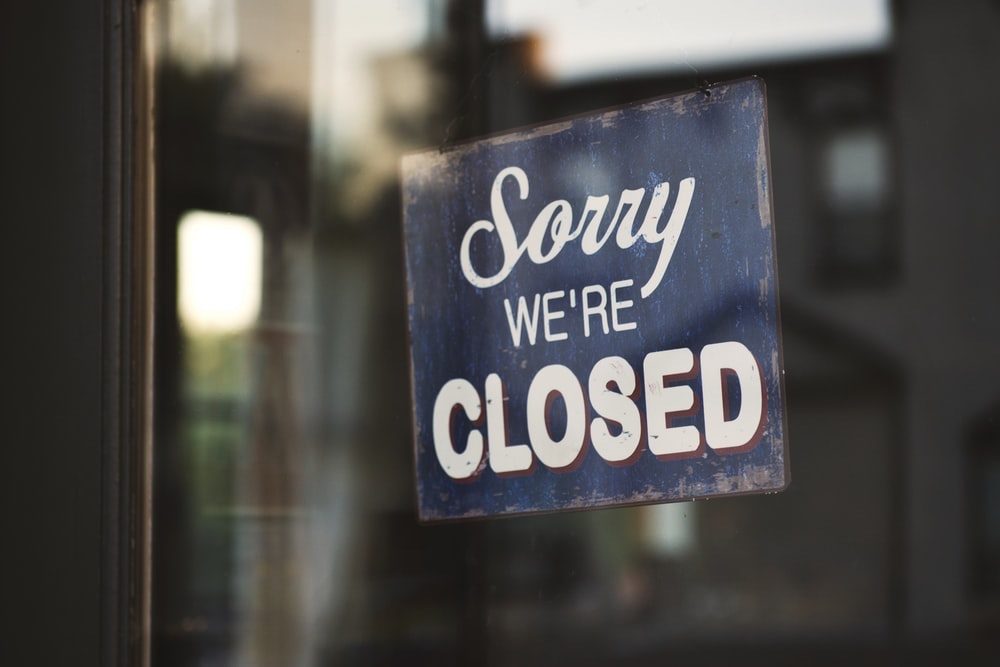
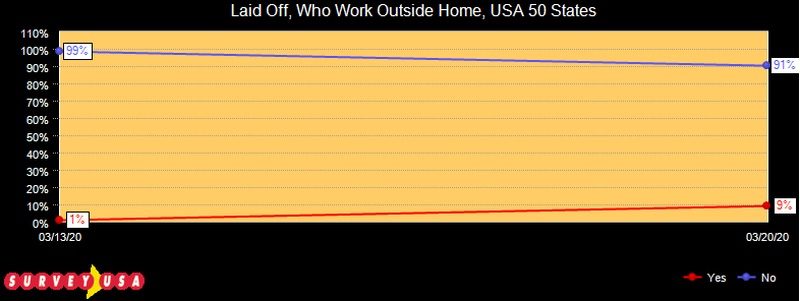
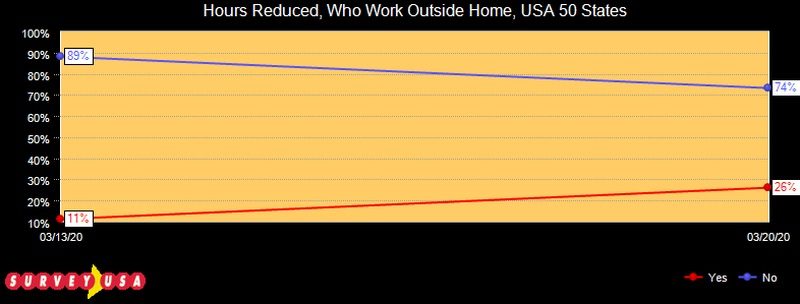
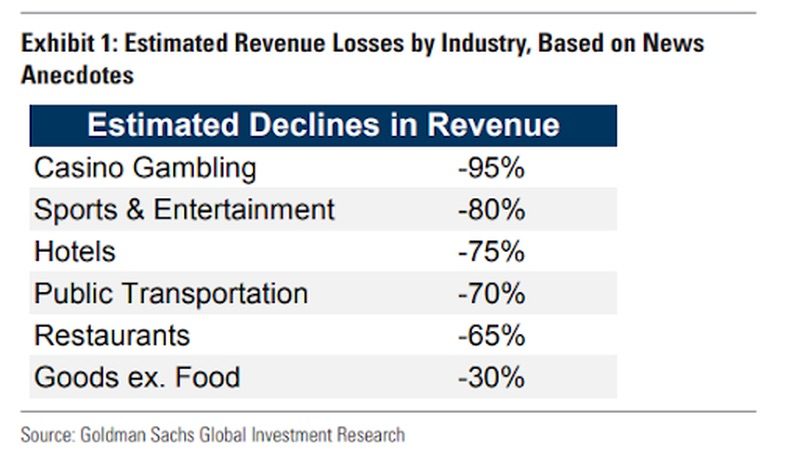
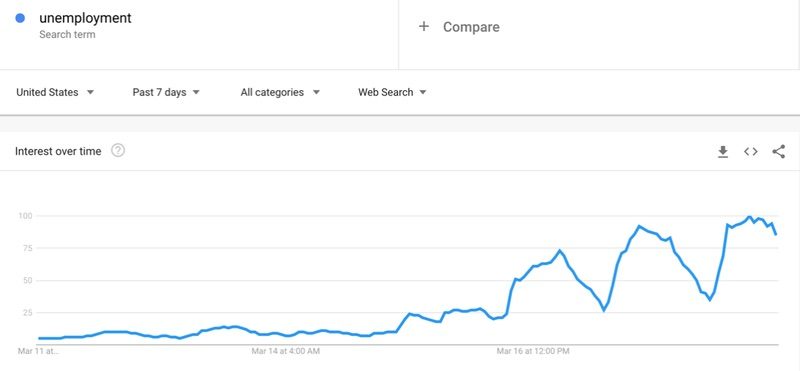



R.C.
*Credit Rocco.